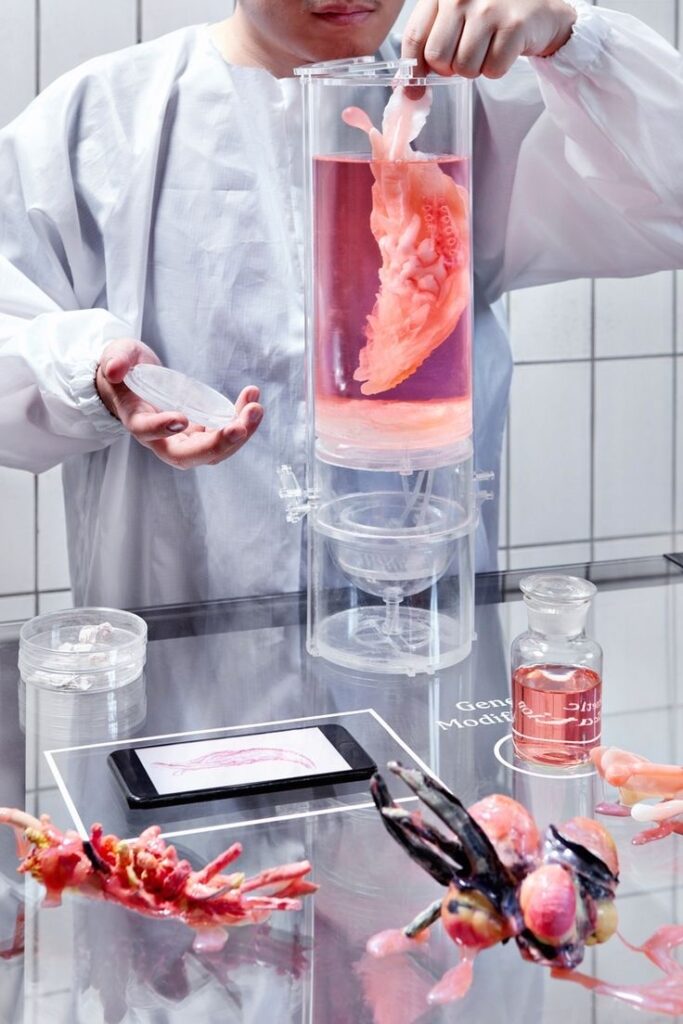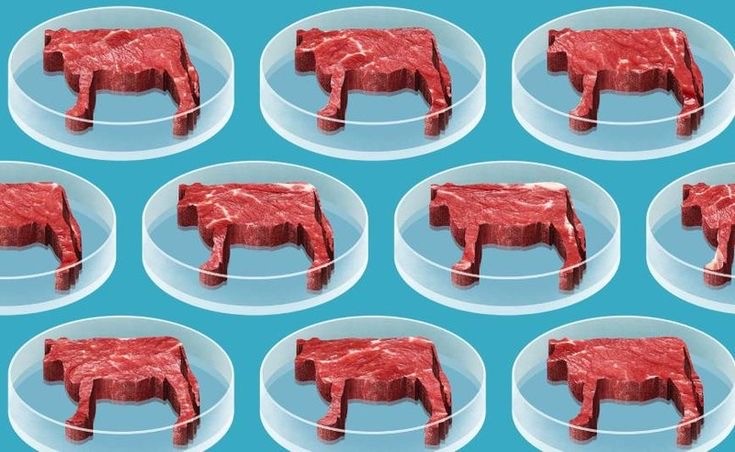In the pursuit of tackling the urgent conundrums of sustainability, ethics, and global food security, culinary innovation is propelling itself into the future through the remarkable advent of lab-grown meat. Frequently denoted as “cultured” or “cell-based” meat, this groundbreaking technology stands on the brink of a transformative revolution in meat production and consumption, holding the pledge of a future nourished by sustenance that is not only more environmentally responsible and ethically aligned but also tantalisingly delectable.
It is essential to understand the challenges associated with conventional meat production before exploring the wonders of lab-grown meat. The well-established livestock business is well-known for leaving a significant environmental impact, as seen by deforestation, greenhouse gas emissions, and excessive water use. Beyond environmental issues, there is a widespread ethical outcry regarding animal cruelty in the context of factory farming. In light of these serious problems, lab-grown beef stands up as a potential solution.

In essence, lab-grown meat involves the culture of animal cells, which represents a paradigm shift from the conventional method of breeding and butchering whole animals. A small sample of animal cells is normally used to start the process. These cells are usually obtained non-invasively from a living donor. These cells reside in a nutrient-rich culture medium, where they proliferate and transform into the different components of meat, including muscle tissue and fat. Similar to growing crops in a hydroponic garden, but with animal cells as the starting point instead of soil.
Innovation in lab-grown meat is based on sustainability. Lab-grown meat is poised to survive with substantially fewer resources, diverging significantly from conventional meat production, which consumes enormous amounts of land, copious amounts of water, and large amounts of feed. This game-changing technology has the power to prevent more deforestation, reduce the carbon footprint associated with meat production, and protect our precious water supplies. Additionally, it reduces the need for antibiotics, lowering the risk of zoonotic illnesses at the same time because animals lose their potential function as carriers.

The ethical compass guiding lab-grown meat is equally compelling. For many, animal welfare resides at the zenith of concerns, and lab-grown meat heralds a pathway to relish meat without the concomitant harm inflicted upon animals. Given that the process circumvents the traditional raising and slaughtering of animals, it stands as a bulwark against the suffering typically synonymous with factory farming. This convergence with the burgeoning trend of ethical eating mirrors the yearning of numerous consumers to make more compassionate and empathetic choices in their culinary pursuits.
The victorious blending of flavour and texture plays a crucial part in the rise of lab-grown meat, and enormous efforts have been made to master these crucial components. The textural and flavour nuances of the first iterations of lab-grown meat may have been a source of difficulty, but the never-ending march of research and development has produced goods that come close to the revered standards of traditional meat. Given its capacity to be precisely tuned to suit consumers’ discriminating tastes and preferences, some voices even raise the prospect that lab-grown meat may surpass its conventional counterpart.

While the allure of lab-grown meat is undeniably magnetic, a constellation of challenges remains in the ascent. Scaling up production to meet the burgeoning global appetite for meat while ensuring competitive pricing remains an ardent trial. Concurrently, the crafting and fine-tuning of regulatory frameworks stand as imperative milestones, tasked with guaranteeing the safety and transparency of lab-grown meat products. Yet, it is the embrace and comprehension of consumers that will ultimately determine the destiny of this culinary revolution.
With lab-grown beef serving as our compass, the world of culinary futurism sends us on an exciting excursion into the future of food. It has the potential to solve some of the most difficult problems facing our generation on this journey. It weaves sustainability, ethics, and accessibility into the very fabric of our dining experience, heralding a change in how we view meat. Lab-grown beef shines like a beacon as we set out on this never-ending adventure of culinary innovation, providing a delicious and fortunate step forward in shaping a better future for our planet and the ever-discerning world of our taste.
Sources
- https://innovationorigins.com/en/the-future-of-food-lab-grown-meat-revolution/#:~:text=As%20the%20industry%20overcomes%20challenges,alternative%20to%20traditional%20animal%20agriculture.
- https://innovationorigins.com/en/the-future-of-food-lab-grown-meat-revolution/
- https://www.greenqueen.com.hk/amp/10-reasons-why-cultivated-meat-is-the-future-of-protein-the-case-for-lab-grown/
- https://interestingengineering.com/culture/lab-grown-meat-sustainable-ethical-food-production




